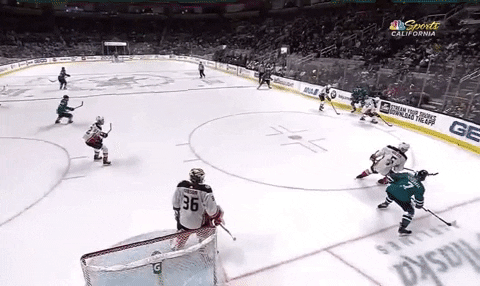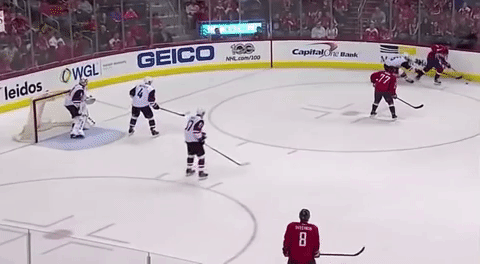Puck support is critical for team success. It’s something every coach will talk about. We are going to write on this topic a few times in the upcoming weeks to go down the offensive zone (OZ) puck support rabbit hole.
This is part 1 of a 3 part series:
Part 1 - OZ Puck Support: Close or Far?
Puck Support
To give support or not? A resounding “YES!” is the answer, but that answer doesn’t really help anyone. It’s too generic.
Digging deeper, that the real question is, ‘what kind of support should you provide to your teammates? Close support or far support?’
Close Support
A great rule of thumb is that when you should give close support to a teammate if they are under heavy pressure.
In this situation, a teammate would be struggling to fend off the immediate defensive pressure. If possible, keep moving because need to get out of that pressure if you get the puck.
Below is a read that the 3rd person high looks and notices that his teammates is going to be receiving the puck under heavy pressure. Instead of staying high in the offensive zone, he skates toward his teammate and reads the play from there.
Far Support
Pavel Datsyuk was infamous for telling teammates to get away from him. He did not want help. He wanted you to get open for when he emerged from his battle.
If your teammate has time/space … get away, far away. This ensures they will have as little pressure as possible. If you go close then you’re bringing your defender with you and adding pressure.
The other massive benefit is that the defenders now have to make a choice, “do I stay or do I go?” When defenders are making decisions like that it’s an advantage for the attackers. Presence away from the play stretches the defense’s resources and stretches them to their limits where they have to make decisions.
This could mean moving away from the net to higher in the zone:
Or sliding to the back-side/weak-side:

Another could be like Alexander Ovechkin on the Power Play where he shows patience and waits for the puck to make its way to him
That patience is something that is surprisingly difficult for young players. We’ve touched on this in our first-ever post with a 3v2 low game with a backside presence theme. In the video below we can see the types of puck support and players struggling to stay patient & wide (e.g. near the far-side dot).
Further Reading - The saucer pass is overrated + other pass types/options
Check out our part 2 over here.
Did you enjoy this newsletter?
Help us spread the ideas within and share it with the people you care about






